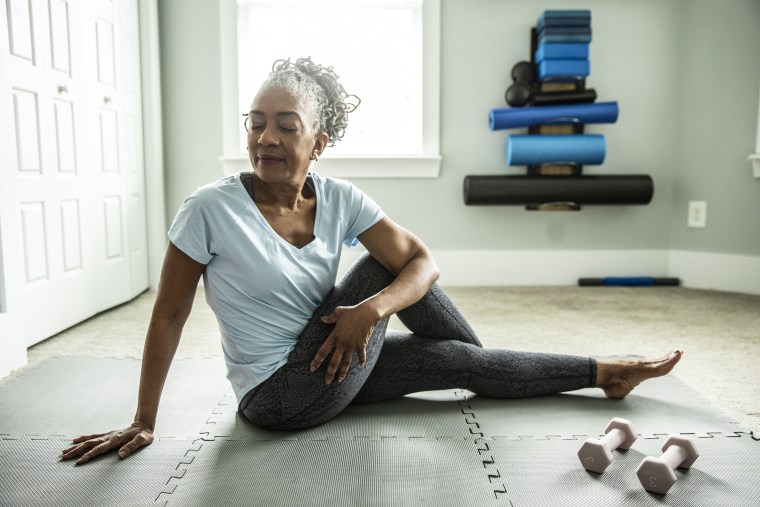As a personal trainer and weight-loss coach, I am constantly answering health and fitness questions from my clients, on social media and in our Start TODAY Facebook group. In this column, I address some of the most common questions and roadblocks that trip people up on their journey to establish a health and fitness routine.
How often do I need to stretch to really see results?
Whether done to improve physical performance, improve flexibility, or reduce pain, stretching is a great addition to your weekly routine. Stretching has been shown to increase range of motion or flexibility and improve overall performance in daily activities. In addition, an increased range of motion, which strengthens the joints and muscles throughout an extended movement, is important because it decreases the risk of injury.
But how often should you be stretching to see results? A few factors need to be taken into consideration. How often do you exercise and what goals do you wish to achieve from stretching? Do you want to improve mobility, flexibility or performance? The answers may increase the frequency and type of stretching that you do. Here's what you need to know:
How often do I need to stretch to really see results?
To get the most benefit from stretching, it’s recommended to stretch at least three times per week. However, the American College of Sports Medicine states that the major muscle groups should be stretched minimally two times a week for about 60 seconds per stretch. As a yoga instructor, I also recommend that my clients integrate yoga into their routines either twice a week for longer sessions or up to daily if they do five minutes or less.
The benefits of stretching
Consistent stretching improves flexibility and mobility, resulting in improved physical performance and range of motion in everyday activities and during workouts. This can prevent injury by strengthening the muscles and joints in different ranges of motion.
Many of my clients use stretching to keep the body healthy, including the muscles and joints that can become tight or weak over time. Tight or weak muscles can increase the risk of muscle damage, strains or joint pain. Sitting at a desk all day is a typical scenario in which the muscles (in this case, the hamstrings and muscles around the hips) become tight from remaining in one position for hours. If not appropriately stretched afterward, it can not only impede athletic or daily performance, but can increase the likelihood of an injury during other movements.
Dynamic stretching vs. static stretching
Dynamic and static stretching are two different types of stretching, but both have great benefits if used correctly.
Dynamic stretching is an active form of stretching that should be used pre-exercise or physical activity. For example, if you’re getting ready to perform squats and lower body strength training, warming up your hips is important. Many gym goers use hip swings to warm the hips before a lower body session. This is an example of dynamic stretching.
Static stretching is a non-active form of stretching. This form of stretching should be used post-exercise to aid in cooling down the body and releases tension in the muscles and joints. Static stretching can also be used at home to improve flexibility and stretch out tight muscles, like the hamstrings that may become tight from sitting at a desk for too long.
The best time to stretch
Dynamic stretching pre-exercise and static stretching post-exercise is highly recommended to prevent injury and decrease delayed onset muscle soreness.
I also recommend stretching whenever you can during the day! Whether that’s after waking up, before going to bed or when taking a break at work. During these times, stick to static stretching, since the goal is to release tension in the muscles and joints, not prepare them for any form of activity.
Be cautious of overstretching
Like anything done in excess, stretching too often or for too long can do more harm than good. It’s important to note that there is a difference between stretching through tension and stretching through pain. If a stretch is painful, stop immediately. This is your body’s signal that a muscle or other part of the body is being pushed past a safe limit. Pushing your body past this limit can lead to a strain or sprain.
In addition, before I had the body awareness to engage my core during yoga stretches like forward folds and downward facing dog, my low back became sore if I was in a stretch for too long. That’s because I was flexible enough in my legs to go further in my stretch, but not aware enough or strong enough in my core to engage my core while stretching to take the pressure off of my back.
So listen to your body, pull your naval in toward your spine to engage your core, and stretch regularly!

